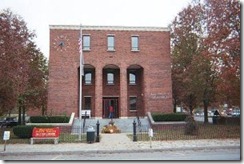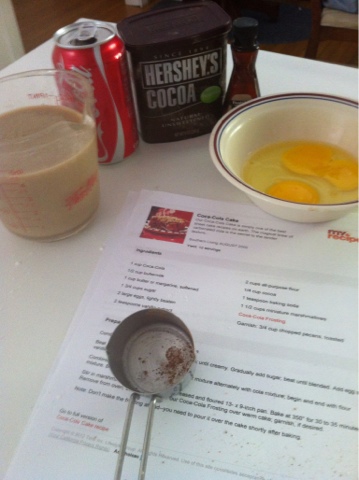Courthouses and Cafes
 |
| Not the prettiest courthouse, but a tasty cafe! Photo via Kentucky Court of Justice. |
 |
| Photo via Shelby County Facebook Page |
 |
| Photo via Kentucky Court of Justice |
From the Hickman County Courthouse, where the Clerk showed us filming locations for the Tommy Lee Jones film U.S. Marshals, to the Bell County Courthouse, nestled in Pineville among the mountains, there are some amazing small towns, old buildings, and awesome eateries in this state. I was afforded the opportunity to see and spend some time in these towns, and I encourage you to explore them, too. Not all the Kentucky gems are found in Louisville or Lexington. Some of the best hometown hospitality and charm just might be off the beaten path in the local courthouse square.
Do you have a favorite courthouse or cafe? Share it with us in the comments!
Junior League Horse Show
Source: lexjrleague.com via Connie on Pinterest
Source: aceweekly.com via AceWeekly on Pinterest
Coal in Appalachia
 |
| Elkhorn scrip via KY Coal Heritage |
 |
| Garrett, 1915 via KY Coal Heritage |
 |
| Garrett, 1970s via Garrett Historical Society |

 Eastern Kentuckians have, in my experience, always felt stymied by this conundrum. Our region is mineral-rich and nestled away; it was absolutely perfect for the signature industry we developed. Now, that industry is slipping away. Most of the coal is gone. Environmental regulations -- whether you love them or hate them -- are phasing out the portions of the industry that remain. And, we're left terrified, wondering What's next? The very "nestled away-ness" of the region that once produced deep mineral reserves has also prohibited any successful bids for establishing factories or other large-scale business.
Eastern Kentuckians have, in my experience, always felt stymied by this conundrum. Our region is mineral-rich and nestled away; it was absolutely perfect for the signature industry we developed. Now, that industry is slipping away. Most of the coal is gone. Environmental regulations -- whether you love them or hate them -- are phasing out the portions of the industry that remain. And, we're left terrified, wondering What's next? The very "nestled away-ness" of the region that once produced deep mineral reserves has also prohibited any successful bids for establishing factories or other large-scale business."There is no easy resolution to the fraught relationship between the coal industry and the people of Appalachia, many of whom rely on it for jobs even as it poisons their regions. But it is imperative that the industry's leaders and their elected allies lay down their propaganda and engage an honest, civil dialogue about the issue. The stakes are too high to do otherwise."
National Fried Chicken Day
Source: vintageadbrowser.com via Her on Pinterest
Source: neatorama.com via Her on Pinterest
Of course, here in Kentucky, there are more than a few places to go for chicken. Ramsey's and Merrick Inn are my go-to spots in Lexington. And, of course, there's always KFC! How do you like your fried chicken?
Coca-Cola Cake

Apple pie has long been the embodiment of Americana. Except, well... I'm not a huge fan of fruit pies. And I don't make good pie crust. So, when I decided to make a dessert for last night's family Fourth cookout, I decided to seek inspiration elsewhere.
Nothing's more American (and, for that matter, Southern) than Coca-Cola, right?

So, I decided to make a Coca-Cola cake. I'd heard many times that it was a classic recipe of my late great-aunt's, but I'd never actually sampled it. So, I tried a recipe from Southern Living, which is, of course, the bible for such things. The cake turned out well, if a little gooey and indulgent. I'm always fascinated to try recipes from bygone eras. Boiled frosting and mini-marshmallows are such a throwback to Sixties cookery. I'd never used either before. Nor had I cooked with soda. But, the result was really fun and, I have to say, delicious.
It was also really nice to hear comparisons to my Great-Aunt Marie's cooking; she was such a wonderful, gracious, vibrant lady. She and my Great-Uncle Ed lived on the Atlantic Coast of Florida in the Eighties and Nineties. They spent their summers here in Kentucky; we were always so excited when they would arrive, bringing them, their curiously Florida-bright polyester ensembles, their ubiquitous chihuahua, and a van-load of presents for us kids. Now that we're all adults, my brother and cousin frequently joke that I've become the Aunt Ree of our generation whenever I don a particularly loud Lilly Pulitzer dress, adopt yet another dog, or wear one of her vintage brooches. I sure hope they're right. At least I know that I have one of Aunt Ree's signature recipes down pat.
Coca-Cola Cake, via August 2002 Southern Living
Ingredients
1 cup Coca-Cola
1/2 cup buttermilk
1 cup butter or margarine, softened
1 3/4 cups sugar
2 large eggs, lightly beaten
2 teaspoons vanilla extract
2 cups all-purpose flour
1/4 cup cocoa
1 teaspoon baking soda
1 1/2 cups miniature marshmallows
Coca-Cola Frosting
Garnish: 3/4 cup chopped pecans, toasted
Preparation
Combine Coca-Cola and buttermilk; set aside.
Beat butter at low speed with an electric mixer until creamy. Gradually add sugar; beat until blended. Add egg and vanilla; beat at low speed until blended.
Combine flour, cocoa, and soda. Add to butter mixture alternately with cola mixture; begin and end with flour mixture. Beat at low speed just until blended.
Stir in marshmallows. Pour batter into a greased and floured 13- x 9-inch pan. Bake at 350° for 30 to 35 minutes. Remove from oven; cool 10 minutes. Pour Coca-Cola Frosting over warm cake; garnish, if desired.
Note: Don't make the frosting ahead--you need to pour it over the cake shortly after baking.
Coca-Cola Frosting
Ingredients
1/2 cup butter or margarine
1/3 cup Coca-Cola
3 tablespoons cocoa (I used dark chocolate cocoa here.)
1 (16-ounce) package powdered sugar
1 tablespoon vanilla extract
Preparation
Bring first 3 ingredients to a boil in a large saucepan over medium heat, stirring until butter melts. Remove from heat; whisk in sugar and vanilla.
How To: Kentucky Printable
Want to make one for your city? Simple!
1. Download the blank state printable from The Vintage Lemon
2. Upload it to PicMonkey
Happy Fourth, Y'all!
Source: preptothemax.tumblr.com via Her on Pinterest
Source: toryburch.com via Her on Pinterest













